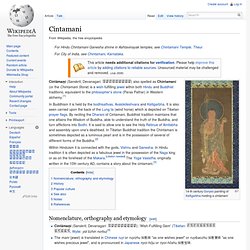

Karma Cats "The Chintamani Stone" Shambhala the Resplendent: Finding Our Sacred Balance. Shambhala the Resplendent: The Legend of the Chintamani Stone By Deni Gross Through the stars I come. I bring the chalice covered with the shield. Within it, I bring a treasure, The gift of Orion. Interspersed among the many stories about the mystical Shambhala, there exists a legend about a mysterious relic known as the Chintamani Stone. The Chintamani Stone has a fascinating background. All mystical implications aside, even scientists agree that moldavites have a unique origin, though not all believe they may have come from an extra-terrestrial source like the Orion system.
Because of its unique properties, the Chintamani Stone is reported to have been in the temporary possession of influential personages at important times in humanity's history – people like Akbar and King Solomon – who were entrusted with special missions necessary to humanity's continued development. Yes, the Stone rests on a cushion, which lies on a marble foundation and is separated from it by a disk of lithium. The Nature and Purpose of the Chintamani Stone. [ link to www.crystalinks.com ] The black stone has many spiritual references. Stanley Kubrick uses alchemical allegories through out the film '2001: A Space Odyssey'.
The obvious analogies in '2001: A Space Odyssey' are the celestial alignments that proceed each of the alchemical transmutations in the film. The second main allegory is that it is a black stone that initiates these transmutations. Nicholas Roerich and The Chintamani Stone - A Holy Grail from Sirius? By Mark Amaru Pinkham for Four Corners Magazine from FourCornersMagazine Website.

Chintamani Stone. Chintamani Stone from JamesAxler Website It appears to be a trapezohedron made of black stone or ore, with glowing striations. However it is more, or less, than stone. Scientists would not be able to study it completely because it exists only partially in humanities concept of matter and space. It is more than an artifact, it is a key to doors that were sealed aeons ago. Cintamani. Cintāmaṇi (Sanskrit; Devanagari: चिन्तामणि) also spelled as Chintamani (or the Chintamani Stone) is a wish-fulfilling jewel within both Hindu and Buddhist traditions, equivalent to the philosopher's stone (Paras Pathar) in Western alchemy.[1] In Buddhism it is held by the bodhisattvas, Avalokiteshvara and Ksitigarbha.

It is also seen carried upon the back of the Lung ta (wind horse) which is depicted on Tibetan prayer flags. By reciting the Dharani of Cintamani, Buddhist tradition maintains that one attains the Wisdom of Buddha, able to understand the truth of the Buddha, and turn afflictions into Bodhi. It is said to allow one to see the Holy Retinue of Amitabha and assembly upon one's deathbed. In Tibetan Buddhist tradition the Chintamani is sometimes depicted as a luminous pearl and is in the possession of several of different forms of the Buddha.[2] Nomenclature, orthography and etymology[edit] History[edit] The Digital Dictionary of Buddhism's ruyizhu entry says: Popular culture[edit] The Shadow of the Dalai Lama – Part II – 11. The Shadow of the Dalai Lama – Part II – 11. The Shambhala Myth and the west © Victor & Victoria Trimondi The spread of the Shambhala myth and the Kalachakra Tantra in the West has a history of its own.
It does definitely not first begin with the expulsion of the lamas from (in 1959) and their diaspora across the whole world, but rather commences at the beginning of the twentieth century in with the religious political activity of an ethnic Buriat by the name of Agvan Dorjiev. The Shambhala missionary Agvan Dorjiev Even in his youth, Agvan Dorjiev (1854–1938), who trained as a monk in , was already a very promising individual. Dorjiev was convinced that the union of with would provide the with an extremely favorable future, and was likewise able to convince the hierarch upon the Lion Throne of the merits of his political vision for a number of years.
Even as a boy, Nicholas II had been fascinated by and the “yellow pontiff” from . Agvan Dorjiev Bolshevik Buddhism How your cities collapse. Don Croner’s World Wide Wanders: Turkey.